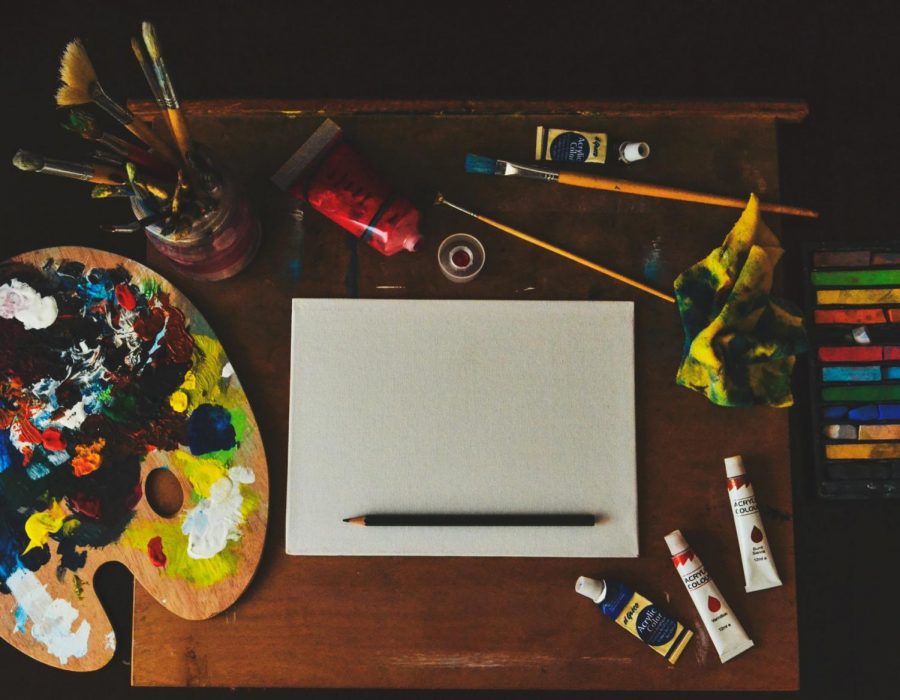The arts go underappreciated
Opinion Columnist Abigail Bennethum argues why art is important to society and deserves more attention.
Nov 14, 2019
Art comes in many different forms such as painting, sculpture, literature, architecture, music, dance, theater, photography and cinema. When we were younger, our teachers opened us up to a world of creative freedom where our imagination was limitless, but due to funding, our production was limited. We have all heard it before: how our art teachers would tell us to be careful with the supplies because they bought them with their own money. As little elementary kids, we didn’t think much of them making that announcement. Under-appreciated art has always been a problem in schools and society. I think it is time to bring this problem to light: society needs to be educated on the benefits that art has to offer.
Not only has the subject of art been underfunded, but it has been extremely under-appreciated. Art is proven to have many benefits tying to mental and emotional health. First, art reduces stress. According to the U.S. National Institute of Health’s website, extensive research found that engagement with creative activities has the potential to contribute towards reducing stress and depression and can serve as a vehicle for alleviating the burden of chronic disease. Another way art can be beneficial is as a tool for kickstarting all other learning. In his book “Arts with the Brain in Mind,” Eric Jensen said, “The systems art nourishes includes our integrated sensory, additional, cognitive, emotional, and motor capabilities are the driving forces behind all other learning.” Lastly, art is beneficial to broaden our intellectual horizons, making our brains think outside of the formulas and equations that we have grown up learning. Comprehension, interpretation and imagination help individuals expand their range of thinking and making their own thoughts to what is in front of them.
People may try to rebut and say, “Well, art isn’t popular because not all people have the talent.” Well, to that I want to stress how somebody doesn’t need to be good at art to enjoy it. Enjoying art is as simple as looking at a painting and appreciating it. Henry David Thoreau once said, “It is not what you look at that matters, it is what you see.” From my experience with art, interpreting what you see comes from what you personally take out of the piece, even if it isn’t exactly what the artist has in mind. It is for enjoyment, advocacy and impact upon a person.
Furthermore, art is not just to admire, or for mental benefits, but it is a learning tool for our history. Looking through our history textbooks, we see paintings from hundreds of thousands of years ago, depicting and recording important events throughout history, including the signing of the Declaration of Independence painted by John Trumbull, The Birth of Venus by Sandro Botticelli and so many more vital pieces that tell our histories. People tend to learn more from looking at photographs, but there are basically no photographs from these time periods, so we rely on artists and creators to document history. That is something which should be appreciated every day, because without it, we wouldn’t have some of the most amazing art that has influenced so many people.
As well as the concept of art being under-appreciated as a whole, potential career paths in the art can be extremely looked over in our society especially when STEM dominates most of the “popular” fields of study. Even though just recently “STEM” turned to “STEAM” which now incorporates art, there is still an under-appreciation of art and the work that comes along with it. There are a vast amount of careers an individual can go into, including advertising, directing, animating, interior design, graphic design, illustration, art teaching and so much more. Individuals dedicate their lives to making pieces that spark an interest in people, which is something not many people can do.
Here on campus, we have some amazing artwork that deserves to be appreciated, most of these works are by students and faculty in our art department. So, I challenge you as you walk to classes every day and throughout the buildings and see all of the artwork, make a mental note and appreciate the time and work somebody took to create an amazing addition to our campus.








